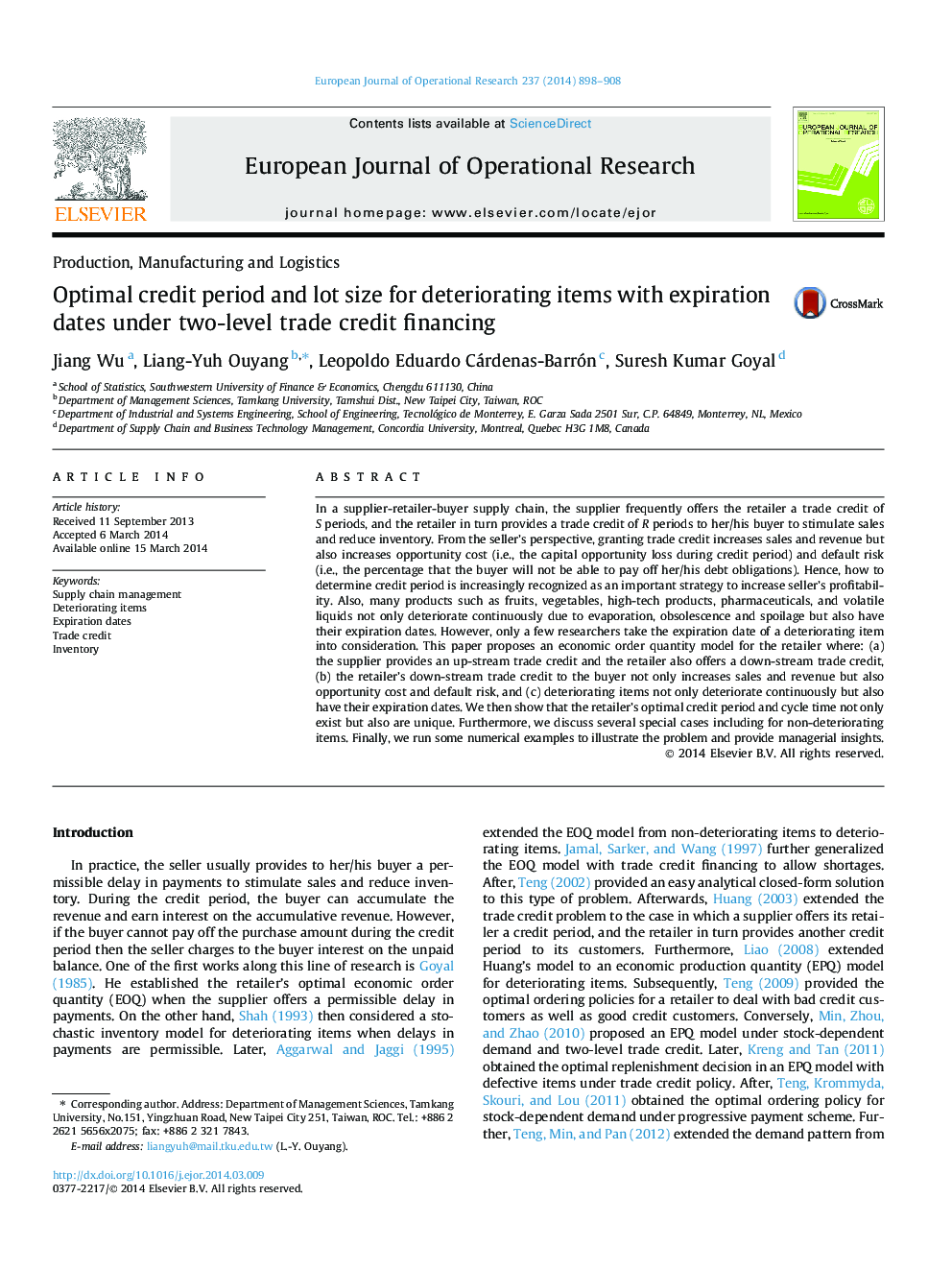| Article ID | Journal | Published Year | Pages | File Type |
|---|---|---|---|---|
| 479716 | European Journal of Operational Research | 2014 | 11 Pages |
•The retailer takes an up-stream trade credit and offers a down-stream trade credit.•The trade credit increases not only sales but opportunity cost and default risk.•Deteriorating items deteriorate constantly but also have their expiration dates.•Both optimal trade credit and optimal cycle time not only exist but also are unique.•The proposed model includes numerous previous models as special cases.
In a supplier-retailer-buyer supply chain, the supplier frequently offers the retailer a trade credit of S periods, and the retailer in turn provides a trade credit of R periods to her/his buyer to stimulate sales and reduce inventory. From the seller’s perspective, granting trade credit increases sales and revenue but also increases opportunity cost (i.e., the capital opportunity loss during credit period) and default risk (i.e., the percentage that the buyer will not be able to pay off her/his debt obligations). Hence, how to determine credit period is increasingly recognized as an important strategy to increase seller’s profitability. Also, many products such as fruits, vegetables, high-tech products, pharmaceuticals, and volatile liquids not only deteriorate continuously due to evaporation, obsolescence and spoilage but also have their expiration dates. However, only a few researchers take the expiration date of a deteriorating item into consideration. This paper proposes an economic order quantity model for the retailer where: (a) the supplier provides an up-stream trade credit and the retailer also offers a down-stream trade credit, (b) the retailer’s down-stream trade credit to the buyer not only increases sales and revenue but also opportunity cost and default risk, and (c) deteriorating items not only deteriorate continuously but also have their expiration dates. We then show that the retailer’s optimal credit period and cycle time not only exist but also are unique. Furthermore, we discuss several special cases including for non-deteriorating items. Finally, we run some numerical examples to illustrate the problem and provide managerial insights.
